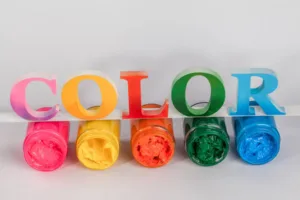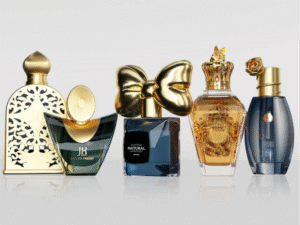Screen printing, also known as silk screening, is a versatile and widely used technique for decorating glass bottles. This method has become increasingly popular in the beverage industry, especially for products like craft beers, spirits, and specialty sodas, where brand differentiation and aesthetic appeal are crucial. This article explores the process of screen printing on glass bottles, its benefits, and its impact on branding and marketing.

Table of Contents
I. The Screen Printing Process
Screen printing on glass involves several precise steps to ensure high-quality, durable prints:
1.1 Design Creation:
The process begins with creating a design, typically in digital format. This design is then transferred onto a screen, which is a fine mesh stretched over a frame. The mesh is coated with a light-sensitive emulsion.
1.2 Screen Preparation :
The prepared screen is exposed to UV light through a film positive of the design. This exposure hardens the emulsion in the areas not covered by the design, creating a stencil.

1.3 Ink Application:
The screen is placed over the glass bottle, and ink is applied to the screen. A squeegee is used to push the ink through the mesh stencil onto the bottle. Multiple screens and inks can be used for multi-colored designs.

1.4 Curing:
After printing, the ink must be cured to ensure it adheres properly to the glass surface. This is typically done using heat, UV light, or a combination of both, depending on the type of ink used.
2.Common Challenges in Screen Printing on Glass Bottles
Adhesion Issues:
Problem: Poor adhesion of ink to the glass surface can result in prints that easily scratch or peel off.
Solution: Proper surface preparation is crucial. This can include cleaning the bottles thoroughly to remove any contaminants, using primers or adhesion promoters, and ensuring the glass is free of any residue that might affect ink adhesion.
Ink Consistency and Drying:
Problem: Inconsistent ink viscosity can lead to uneven prints, while improper drying can cause smudging or incomplete curing.
Solution: Consistently monitor and adjust the ink viscosity to maintain uniformity. Utilize precise drying and curing techniques, such as UV curing or thermal drying, to ensure the ink properly bonds with the glass.
Screen Registration:
Problem: Misalignment of the screen can cause blurry or off-center prints, especially in multi-color designs.
Solution: Employ precise registration techniques and equipment to ensure each color layer aligns correctly. Regularly calibrate printing machines and use alignment marks to guide accurate screen placement.
Ink Compatibility:
Problem: Not all inks are compatible with glass, leading to issues like poor adhesion or durability.
Solution: Use specially formulated inks designed for glass printing. These inks typically have properties that enhance adhesion and durability on glass surfaces.
Surface Curvature:
Problem: Printing on curved surfaces, such as bottles, can result in distortions or incomplete prints.
Solution: Use flexible screens and adapt the squeegee technique to accommodate the curvature of the bottle. Employ jigs or fixtures to hold the bottles securely in place during printing.
3.Conclusion
Screen printing allows for limited edition designs, seasonal themes, and custom branding for special events. This level of customization can create buzz and increase consumer engagement.
Conclusion
Screen printing on glass bottles is an artful blend of technique and creativity, offering numerous benefits for both aesthetics and functionality. Its ability to produce durable, vibrant, and intricate designs makes it a preferred choice for many beverage brands aiming to differentiate themselves in the market. By enhancing brand recognition, conveying premium quality, and supporting sustainability, screen-printed glass bottles play a crucial role in modern branding and marketing strategies. Whether for craft beers, premium spirits, or artisanal sodas, the elegance and versatility of screen-printed glass bottles make them an invaluable asset in the competitive landscape of consumer products.
Finding a trustworthy manufacturer nowadays is not that easy, especially that there are a lot of new manufacturers that have emerged just to keep up with the trend.



